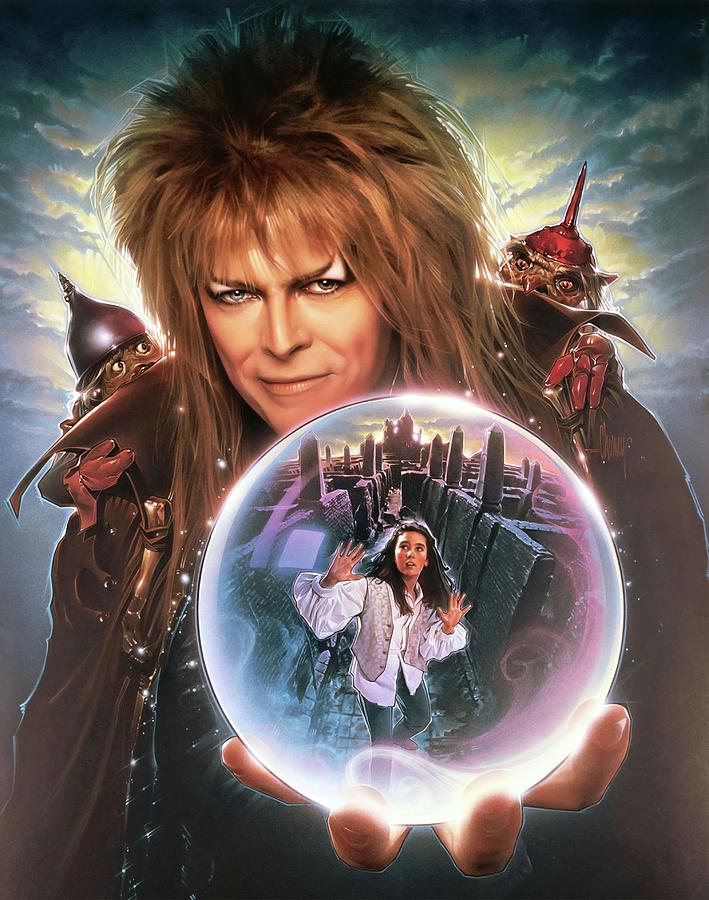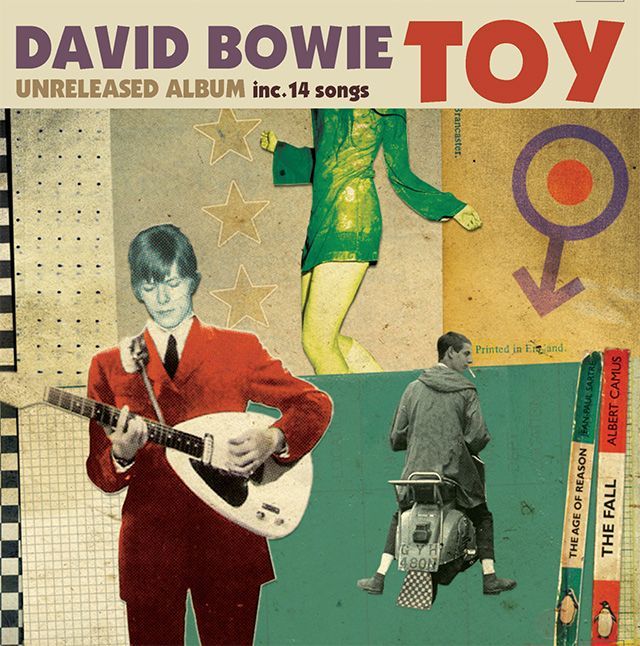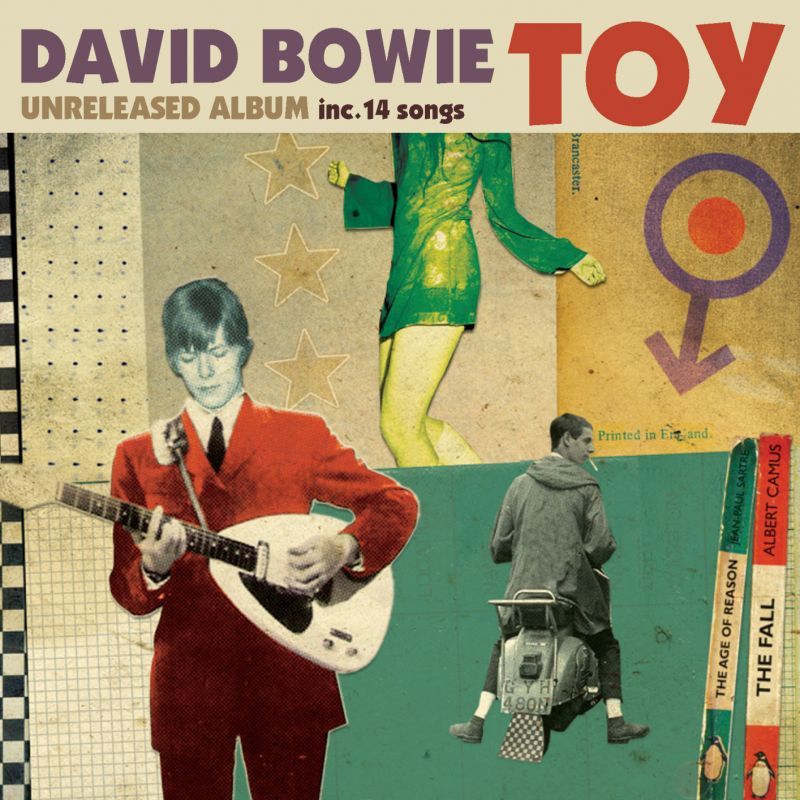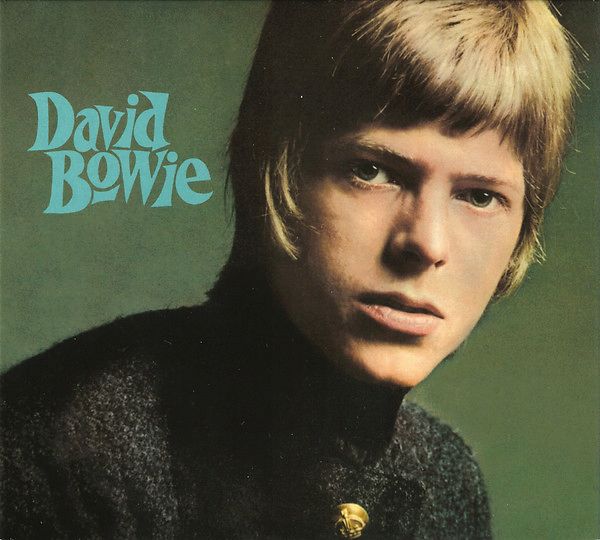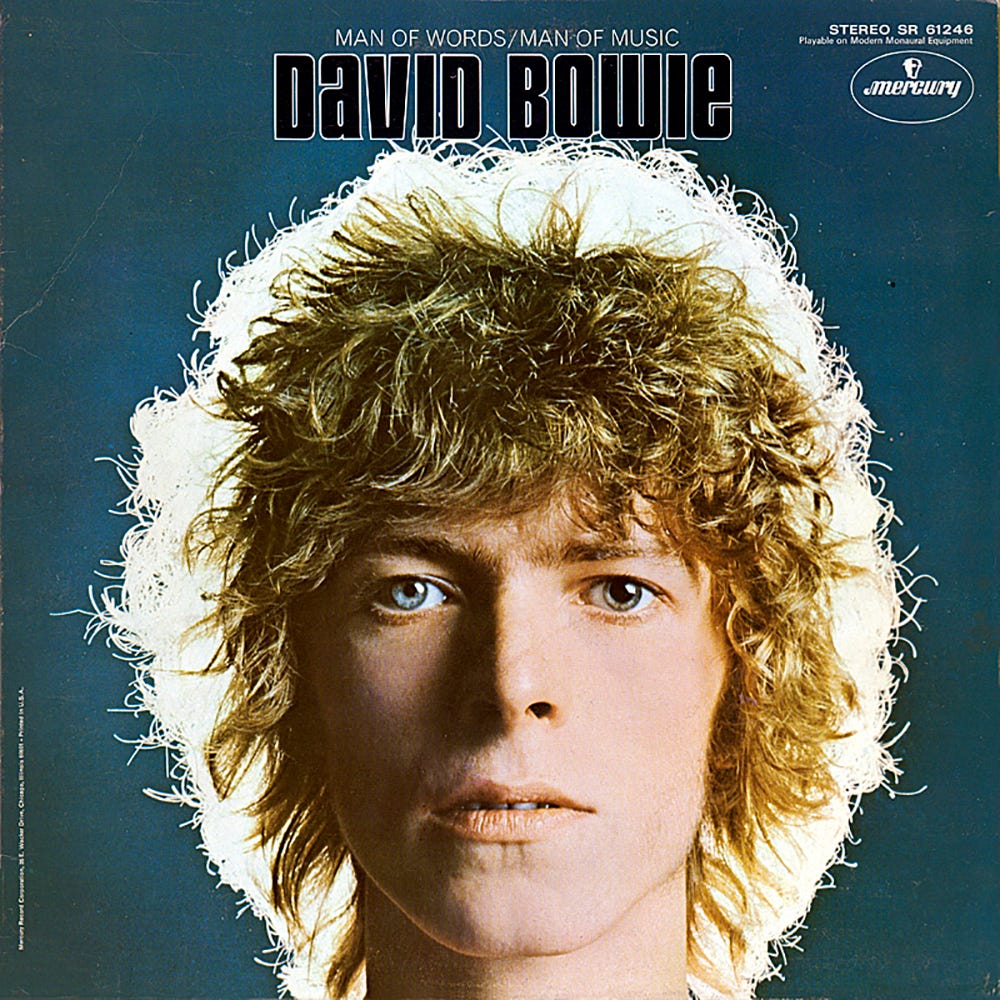From the pompadours and sideburns of the original rock'n'roll era, to the safety pins and dyed mohawks that defined the punk movement, image has always been a part of music. Not until David Bowie, however, did a musician so completely understand how visuals could enhance their work. Introducing a new theatricality to rock, Bowie himself became a walking work of art, expressing each creative phase through new personas and dramatic overhauls of his look. The best David Bowie album covers not only traced the sonic revolutions that played out across his records, they elevated the album cover to the status of high art, creating some of the most iconic images in pop culture history.
Alabama Song by David Bowie was originally released as a single in 1980. It is David Bowie's version of a Bertolt Brecht poem set to music by Kurt Weill in 1927. As Bowie was an admirer of Brecht's work, he'd been playing the song live since 1978. This special picture disc 7" includes Alabama Song in its original single release form and a version from a 1978 concert recorded at Earl's Court, along with a version of Heroes album track Joe The Lion from the same concert. Our Top 10 David Bowie Albums Covers list looks back at an artist that showcased many different looks and characters throughout his entire career.
David Bowie's Album Cover art often represented the characters that he had molded that defined the music and concepts of those very albums. David Bowie's first album was released in 1967 entitled David Bowie. His final album was released in 2016 entitled Blackstar. In between those two records, David Bowie released one of the most massive, deep, brilliant and original body of works in classic rock history. Bowie also released 28 video albums and 72 music videos. Two summers ago I took a trip to London and went on this fascinating rock and roll tour.
One of the stops on the tour was a look at the exact location in which David Bowie was photographed for the cover of his legendary The Rise and Fall of Ziggy Stardust and the Spiders from Marsalbum cover. On the outside wall hangs a plaque commemorating the legendary location for the album cover. What is even more interesting and actually simply mind blowing is that the phone booth that David Bowie posed in for the band cover is still there in the alley behind the pub. Below are pictures of that experience that I took during the summer of 2019.
In our opinion, David Bowie's The Rise and Fall of Ziggy Stardust and the Spiders from Mars is his greatest artistic musical work. Its a brilliant album that cemented his legacy as a genius. To stand in front of the steps that he stood on when shooting the album cover was an incredible experience that all rock fans at one time in their life should experience. This section collates the key studio albums, live releases and box sets. On this page are the studio albums, from 1967's David Bowie to 2016's Blackstar.
Click on the title or cover image to read in-depth features on each release. 'DJ' was the second single from Bowie's album The Lodger. It's a track that inhabits the worlds of both Roxy Music and Talking Heads. It's getting released on a nice picture disc that includes an alternative mix and a version recorded for the Kenny Everett Show in 1979. I also recommend you watch the video for this track, it's pretty weird. As far as I can make out, it's just Dave smiling really widely in various places.
It also boasts title track "Heroes," still one of Bowie's best and most iconic songs, and one that provided the "tasteful anthem" template for decades to come. So after taking half the coke in North America and living on nothing but chilies and milk, he needed to detox or he was going to die. So, of course, you do what any self-respecting superstar does and decamp to Berlin with Iggy Pop and Brian Eno to record a series of seminal art rock albums under the Berlin Wall (see also Iggy Pop's The Idiot and Lust for Life). Low's first side is a series of half songs; listen out for Iggy singing in the background on most of them. Eno had some interesting ideas about songs existing outside of what the listener can hear and giving you only a glimpse of them. You can hear the Kraftwerk influence much more clearly, as we get synths and a much more edgy metallic sound on these half-songs.
Whereas Iggy Pop seems to be getting his life together and feeling on top of things on Lust for Life, I'd describe Bowie's mood here as diffident — watch the video for "Be My Wife" and you'll see what I mean. He is literally "low" — vaguely trying to palm off genuine feelings as the pastiche of feeling, but he's not fooling anyone, this is the real Bowie not the Thin White Duke. The first 6 tracks of this are simply put, amazing. It's new wave / post-punk before punk had even finished. Then you get the dour instrumental suite of tracks that seem to echo Auswitch — and I'll be honest I rarely listen to them. Nonetheless, fantastic album — Bowie truly at his most cutting edge.
It was incredible to be able to span a 50+ year career in four days of intense listening, and I definitely look at all of this music in a different light. It's an exciting record, and that title track is just on some other level. It's like if David Bowie and Björk had a baby and Peter Gabriel was the godfather. It's really well crafted, especially for a single that's almost ten minutes long. I feel like only Bowie could get away with a three year hiatus and then coming back with a single like that. The rest of the album is along the same lines, that sort of dark jazz thing.
Towards the end of the album it trails off a little, but not enough for me to say I didn't absolutely love it. Scary Monsters definitely starts to have an 80's vibe in the production, mostly with the digital reverbs. In a lot of ways this is a continuation of the krautrock influenced records that came before, but he definitely brings in more of that soul and funk, in a more muted sort of way. I remember not liking this record the first time I listened to it years ago, but doing this marathon made me like it a whole lot more. The historical context makes such a huge difference.
If I'm remembering correctly there's a bunch of references to much older songs in this one. I also had a hard time choosing a favorite song, because there are a lot of great ones. The title track is great for instance, and so is "Teenage Wildlife".
The songwriting on that last one seems like a prototype for bands like Arcade Fire. Let it be said, it was a hell of a lot more rewarding and challenging than I expected. The ups and downs were mentally and emotionally draining. The first day, by the time I got to around Ziggy Stardust, I started to get a feel for how autobiographical the albums are as a whole, even when the subjects of the songs themselves might be abstracted.
By the time I got to around Diamond Dogs or Station to Station, I could really feel that continuity of Bowie's craft, melody, and rhythm carry through, no matter how much of a left turn he'd take stylisitically. You can hear big chunks of previous albums in the next ones, even making that huge leap from the glam rock of Diamond Dogs to the plastic soul of Young Americans. Hell, if you squint your ears, you can hear the Berlin Trilogy and krautrock influenced stuff in 1987's Never Let Me Down, or even the much later records in the 90s and 2000s. Before I did this I hadn't caught nearly as many of the threads. David Bowie's self-titled debut album was released in June 1967. In the 49 years between then and the release of Blackstar, he put out numerous studio albums, live recordings, compilations, remixes, and box sets.
This article focuses only on ten of the best album covers that graced those great David Bowie Records. David Bowie has released close to a hundred albums when combing all his studio, live and compilation recordings. We narrowed it down to just choosing from his studio albums which counted less than thirty.
We focused on the ones we thought were the most iconic and had become ingrained in pop culture. David Bowie, who has died at the age of 69, released 26 studio albums in a career that spanned six decades. The art direction of each LP is a reliable snapshot of his mercurial image and sound at the time – both of which were in a constant state of flux throughout his career. Although we've had 3 distinct characters at this stage , they are all basically variations on Ziggy. This is the first time Bowie really really obviously changes his image and sound to deliver an album of what he described himself as "Fake Plastic Soul". At times this feels like an intellectual exercise in disciplined songwriting within a genre and controlled performance — there is an ironic distance between Bowie and his material.
At its best ("Win", "Somebody Up There Likes Me", "Fame", which was co-written by John Lennon) this is very good but there is a lot of middling material here too. This album marks a shift away from traditional rock which he declared "a toothless old woman" — he wouldn't fully return to it until the Tin Machine project in the late 80s.The title track is just tremendous by the way. In 1971, Bowie released one of his most significant albums that would prove to be a major shift in both his sound and career, Hunky Dory.
The record opened with 'Changes', which would remain one of his most famous songs. Strikingly original, relentlessly catchy, and far more rock driven than his previous releases, Hunky Dory can be seen as Bowie first fully mature record and one of the key examples of glam rock. I don't have to tell you what a solid album this is all the way through.
The beginning of the folky Bob Dylan-esque albums, but you can really hear some precursors to his mid-seventies glam phase already. Tough to pick any other song other than the title track because it's so iconic and incredibly crafted, but if I had to choose a second one I would go with Memory Of A Free Festival. Some of these early records it's going to be really tough to stray from the iconic singles, because they really are the best on the albums. After his debut album David Bowie failed to chart in 1967, two years passed between the release of Love You Till Tuesday – the second single from that record – and Space Oddity on 11th July 1969.
It reached number five in the UK charts, and his second self-titled album was released that November (and re-released in 1972 as Space Oddity). Much of the music here is transitional and uneven, but "The Width of a Circle" is by far the most complete collection to date of a haphazardly documented era in Bowie's career. A brand new mix from original producer Tony Visconti to commemorate the 50th anniversary of David Bowie's second self-titled album, later re-issued as Space Oddity in 1972. With the title track introducing 'Major Tom', one of Bowie's most enduring characters, it didn't do much business at the time but is now regarded as a critical turning point in his career.
This new release also features the title track of the brand new box-set release, Conversation Piece. First time repress and remastering of the soundtrack to Labyrinth on vinyl, 31 years after the initial release of the film on 1986. He gave us piano ditties like "Changes", from the homely masterpieceHunky Dory. He gave us "Starman", a space rock anthem with boisterous solos and rallying calls to boogie.
He gave us "Heroes", somehow plucking a politically uniting pop song out of an era in his career focused on developing beguiling ambient and electronic material (also known as the "Berlin" period). He gave us "Rebel Rebel", he gave us "Young American", and he even had a career renaissance that enjoyed maybe his greatest record, the unimpeachableBlackstar, which made an abstract myth of his own death. It may well be one of the greatest art rock records ever released, proving Bowie keen to try new things and deviate from form even in his very last days.
Scary Monsters was a real gem of a David Bowie album that stands as one of his most underrated works. David Bowie's album cover for Scary Monsters depicted David Bowie dressed in a Pierrot costume that represented old Italian figures who performed the art of pantomime. The artwork was designed by Edward Bell with photography completed by Brian Duffy. Bowie's first album following the failure of his 1967 Deram Records solo debut is sometimes seen as a one-hit record — yes, the one with "Space Oddity," about Major Tom — but if you've spent any time with Space Oddity, that's a hard sentiment to agree with. David Bowie was born David Robert Jones on January 8, 1947 in Brixton, London and was an English singer, songwriter, musician, actor, pop legend and cultural icon.
David Bowie also enjoyed success as an actor in films such as Man Who Fell To Earth, Labyrinth, Elephant Man and The Hunger. David Bowie has won a host of awards, including three BRIT Awards, Best British Male Artist in 1984, 2014 and 2017, and British Album for Blackstar. David Bowie died from liver cancer on January 10, 2016 two days after his 69th birthday and the release of the album Blackstar. Bowie may have set a world record with the number of comebacks he made over his career.
After spending the '80s making increasingly bland synthpop and the '90s exploring dance music, his 2002 return to rock & roll reconnected him with his primary audience. No mere cash grab, cuts like "Slow Burn" and his cover of the Pixies' "Cactus" showed Bowie rediscovering the swagger of his glam rock days. The Nietzsche fascination and flirtation with fascism reaches its apotheosis here in the figure of the Thin White Duke, by all accounts a nasty bastard, empty on the inside, who delights in "throwing darts / In lovers' eyes". Bowie had been listening to Kraftwerk around this time and ergo we get the 10-minute title track. He doesn't give us feeling, but a man without feelings pastiching emotion.
"Golden Years" is a terrific single that will get stuck in your head for days. "Stay" has a great riff reminiscent of "the snooker music" (another reference for UK readers, but due to the magic of the internet, I can tell you I'm talking about this). "Word on a Wing" and "Wild is the Wind" are searing ballads. If you listen to this after listening to Ziggy Stardust and consider that the same artist made both within the space of 4 years, you can begin to understand the greatness of Bowie. This album seems like he was struggling on different fronts, trying to find his bearings. There's definitely some takeaway songs on it, like the title track.
The chorus is a little weird but that one really reminds me of his glam years in the seventies. I think he was dealing with a lot of stuff at this point, between 9/11 , and trying to find his way in the decade. The record is a little bit of a downer, so I'm glad he didn't end his career on this note. The album will be released in a box set, which will feature alternative versions, proposed B-sides, and the 'Tibet Version' of 'Silly Boy Blue', which was recorded in 2001 with Philip Glass on piano and Moby on guitar. A third disc in the set, Unplugged & Somewhat Slightly Electric, takes in alternate mixes of 13 Toy tracks, while the package also features previously unseen photos. A mix of new songs and re-recordings of lesser-known tracks dating between 1964 and 1971, Toy was recorded live in the studio shortly after Bowie's headline performance at Glastonbury in 2000.
He planned to surprise release the album as soon as it was finished, but his label, EMI/Virgin, stalled on the project, which it's been speculated may have led to Bowie's eventual switch to Columbia Records. The second half of our top 10 David Bowie album covers list presents the five most iconic covers of David Bowie's career. These album covers were turned into posters, displays and large print ads that dominated pop culture in the 1970s. Even if you were not a David Bowie fan, you could not help but run into the artwork of one of these albums in your travels. "David planned to record the album 'old school' with the band playing live, choose the best takes and then release it as soon as humanly possible in a remarkably prescient manner," the press release said.
"Unfortunately, in 2001 the concept of the 'surprise drop' album release and the technology to support it were still quite a few years off, making it impossible to release Toy, as the album was now named, out to fans as instantly as David wanted." The album that overnight turned David Bowie from a C-list singer into a rock god. Its premise is hilariously ambitious, and Bowie lets his theatrical side free to run to near-Broadway levels, but somehow he pulled it off. It's been pretty much the coolest record of all time since its release in 1972, influencing punk, metal and alternative rock—in short, all the worthwhile electric-guitar music that's come in its wake.
Moments like the title track nail Philly soul's uplifting spirit, but the paranoid funk on "Fame" gives off a fascinatingly strange buzz. First proper album built around his breakthrough single. Nothing else on that level here, but lots of promise and good songs. "Wide-eyed Boy from Freecloud" and "Memory of a Free Festival" could both get stuck in your head for days.
I remember in the 90s Dario G sampled the "sun machine is coming down and it's gonna have a party" line for one of his shitty Ibiza dance songs, ah the 90s. Would recommend listening to the three stand-out tracks and coming back to this when you know Bowie a bit better. Up to this point, most David Bowie album covers had featured photos taken specifically for the record. The stark monochrome shot that appeared on Station To Station, however, was a still taken from Nicolas Roeg's 1976 film adaptation of Walter Tevis' sci-fi novel The Man Who Fell To Earth . With its heavy white border and no-frills red text, the design conjured the utilitarian artworks of German bands like Kraftwerk and Neu!







